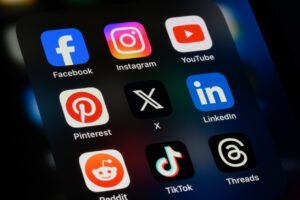Top Stories of 2024: Where Gen Z gets their news (besides social media)
Everyone wants to get Gen Z’s attention.

This story was originally published on Aug. 29, 2024. We’re republishing it as part of our countdown of top stories of the year.
The cohort of people aged 12-27 are prized for their youth and purchasing power, but they can pose a particular challenge for PR professionals using traditional media methods to catch their eye.
About half of TikTok users under 30 use it regularly to scroll for news and politics, Pew Research found. But social media isn’t the only way of reaching these teens and young adults.
Research conducted by Morning Consult found that Gen Z men and women display markedly different news consumption habits. Men consume much more news than women – a pattern that plays out across generations. Depending on the news source, men are between 7 percentage points and 14 percentage points more likely to consume news than women.

That makes Gen Z women a particularly tricky group to engage with on news topics. But that doesn’t mean it’s impossible.
Roughly a third of men engage with traditional television, digital and newspaper sources while about a quarter of women do the same, depending on the source. Both are more likely to gravitate toward television over news sources you read, indicating the generation’s bent toward video in all formats.
The data also shows a willingness to engage with paywalled media, including the New York Times, Washington Post and Wall Street Journal. However, there is little interest – especially among women – in deep-dive political content, as found in Politico, which saw the lowest engagement rates for both men and women.
However, it’s worth noting this is far from an exhaustive look at how Gen Z engages with news. It measures the largest, most popular national media in the country, without allowances for local media sources or softer news content. Still, when targeting hard news stories for Gen Z, this list can help you cull through your options and make the best decisions about where to reach this prized group.
But obviously Gen Z doesn’t spend all their time watching the news. They partake in several hobbies that PR professionals can also take advantage of to get a sliver of their attention.
Sports can be a popular way to get in front of these audiences as well, through partnerships, adjacencies or influencer deals. And Gen Z still loves sports – again, mostly men. Sixty-three percent of Gen Z men regularly engage with the NFL, with another 62% tuning in for the NBA; that’s compared to 42% and 33% for women, respectively.
While not specifically related to news, both Gen Z men (51%) and women (41%) listen to podcasts at least once a week, offering a different way to position sources and principals without going to legacy media. Podcasts, with their plethora of topics, also offer opportunities for narrowcasting messages to hypertargeted groups of people.
Both men and women are devotees of music (75% and 76%, respectively) and playing both console and computer video games at least once a week.
When it comes to live events that might be ripe for activations, movies and hosting parties are most popular – likely speaking to the smaller, student or early career incomes of this young group. Concerts and sporting events are also popular, but in smaller numbers, again, likely driven by higher costs.

The brands they love most
We see stark divides in what brands Gen Z men and women are most interested in. Men lean almost entirely toward tech brands: YouTube, TikTok, Apple, Netflix and the iPhone make up the male-centric top five. Meanwhile, women are more info food and fashion, with their top five consisting of TikTok, Starbucks, SHEIN, the iPhone and Temu, with McDonald’s at Number 6.
The bottom line
As with any generation, there is no one-size-fits all plan. Gen Zers are in vastly different stages of their life – a 27-year-old member of the generation has more in common with their elders in the Millennials than a 12-year-old schoolkid – and show deeply differing attitudes toward news and consumption.
While PR professionals make broad statements about generations, a truly successful strategy will move beyond age and gender cohorts to understand the most likely purchasers for their goods and services on a deeper level. Unless you’re one of a handful of megabrands, every person 12-27 is not your target audience. It must be more nuanced and thoughtful – and that includes your media mix.
Good luck.
Allison Carter is editor-in-chief of PR Daily. Follow her on Twitter or LinkedIn.







